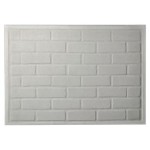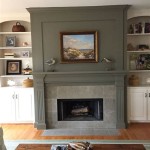Ventless Natural Gas Fireplaces: A Comprehensive Guide
Ventless natural gas fireplaces offer an attractive alternative to traditional wood-burning fireplaces and vented gas fireplace models. They provide supplemental heat and aesthetic appeal to homes without the need for a chimney or extensive venting system installation. This article delves into the mechanics, advantages, disadvantages, safety considerations, and guidelines for choosing the right ventless natural gas fireplace.
Unlike their vented counterparts that exhaust combustion byproducts outside the home through a chimney or vent pipe, ventless fireplaces operate by burning gas very efficiently, minimizing the production of harmful emissions. This efficiency allows them to release the majority of the heat generated directly into the room. The design incorporates an Oxygen Depletion Sensor (ODS) that continuously monitors oxygen levels and shuts off the gas supply if the oxygen concentration falls below a predetermined threshold, preventing carbon monoxide poisoning.
The core operation of a ventless natural gas fireplace relies on a precisely engineered burner system. This system mixes natural gas with air in a controlled manner, ensuring a clean and complete combustion process. The ceramic logs are positioned to radiate the heat effectively, creating a realistic flame appearance. Many models also include features such as adjustable flame height, thermostats, and remote controls for enhanced convenience and control over the heating output.
Installation typically involves connecting the fireplace to an existing natural gas line, securing the unit to the wall or floor according to manufacturer specifications, and conducting a thorough leak test. It is crucial to adhere strictly to local building codes and regulations, and professional installation is often recommended to guarantee safety and proper functionality.
Understanding the Advantages of Ventless Natural Gas Fireplaces
The primary advantage of ventless natural gas fireplaces is the elimination of the need for a chimney or vent. This simplifies installation, reduces costs, and expands placement options within a home. They can be installed on interior walls where a chimney is not feasible, providing flexibility in design and renovation projects. This also makes them an attractive option for apartments and condominiums where structural modifications are often restricted.
Another significant advantage is their heating efficiency. Because all the heat generated remains within the room, ventless fireplaces can provide a substantial source of supplemental heating. They boast efficiency ratings approaching 99%, meaning virtually all the energy content of the natural gas is converted into usable heat. This can translate to lower heating bills, particularly when used to heat specific zones within a home rather than relying solely on a central heating system.
The aesthetic appeal of ventless fireplaces is another compelling factor. Modern designs offer realistic flame patterns and ceramic logs that mimic the appearance of a traditional wood-burning fire. Various styles are available, ranging from contemporary to traditional, allowing homeowners to select a model that complements their existing décor. Many units also include decorative features such as brick liners and ember beds that further enhance the visual realism.
Finally, ventless fireplaces can often be operated during power outages, providing a reliable source of heat when electricity is unavailable. This can be especially valuable in areas prone to severe weather events that frequently disrupt the power grid. This off-grid heating capability adds a layer of security and comfort, particularly in colder climates.
Potential Disadvantages and Safety Considerations
Despite the numerous advantages, ventless natural gas fireplaces also present potential disadvantages and safety considerations that must be carefully addressed. While designed to burn cleanly, they do release small amounts of combustion byproducts into the room, including water vapor, carbon dioxide, and trace amounts of nitrogen dioxide. Adequate ventilation is essential to prevent the buildup of these byproducts, which can lead to discomfort or, in extreme cases, health problems.
Manufacturers typically recommend a minimum room size based on the BTU output of the fireplace. Smaller rooms require smaller BTU appliances to avoid excessive moisture buildup and oxygen depletion. Additionally, it's essential to ensure proper air circulation by opening a window or door slightly, especially during extended operation. Regular monitoring of humidity levels is also advisable, particularly in tightly sealed homes.
The Oxygen Depletion Sensor (ODS) is a critical safety component in ventless fireplaces. However, it is not a substitute for a properly functioning carbon monoxide detector. A carbon monoxide detector provides an independent warning in the event of incomplete combustion or a malfunctioning ODS system. Regular testing of the carbon monoxide detector is crucial to ensure it is functioning correctly.
Furthermore, ventless fireplaces should never be used in bedrooms or bathrooms due to the potential for oxygen depletion in these enclosed spaces. They are designed for supplemental heating in larger living areas where adequate ventilation can be maintained. Additionally, it's crucial to follow all manufacturer instructions regarding clearances to combustible materials and proper installation procedures.
Finally, ventless fireplaces are not suitable for individuals with pre-existing respiratory conditions such as asthma or COPD. The combustion byproducts, even in small amounts, can exacerbate these conditions. Consultation with a healthcare professional is recommended before using a ventless fireplace if any respiratory issues are present.
Choosing the Right Ventless Natural Gas Fireplace
Selecting the appropriate ventless natural gas fireplace requires careful consideration of several factors, including the size of the room, the desired heating output, the aesthetic style, and safety features. Determining the correct BTU rating is paramount to ensuring adequate heating without overshooting the room's capacity. A general rule of thumb is to use approximately 30 to 40 BTU per square foot of living space, but this can vary depending on insulation levels and climate conditions.
Consider the aesthetic style of the fireplace and how it will complement the existing décor. Ventless fireplaces are available in a wide range of designs, from traditional log sets to modern linear models. Select a style that aligns with the overall design of the room and enhances its visual appeal. Pay attention to details such as the ceramic log design, the firebox lining, and any decorative accents.
Evaluate the safety features and certifications of the fireplace. Look for models that are certified by recognized testing laboratories such as CSA or UL. These certifications indicate that the fireplace has been tested and meets established safety standards. Verify that the unit is equipped with a functioning Oxygen Depletion Sensor (ODS) and that it has been properly tested and calibrated.
Examine the warranty offered by the manufacturer. A comprehensive warranty provides assurance against defects in materials and workmanship. Pay attention to the duration of the warranty and what it covers. Also, consider the reputation of the manufacturer and their track record for quality and customer service.
Finally, factor in the cost of installation and ongoing maintenance. While ventless fireplaces are generally less expensive to install than vented models, there are still costs associated with connecting to the natural gas line and securing the unit. Regular maintenance, such as cleaning the burner and inspecting the ODS system, is also necessary to ensure safe and efficient operation. Professional inspection and servicing are recommended annually.
:max_bytes(150000):strip_icc()/ventless-gas-fireplaces-4160746-hero-f9d4bdcd9bd446eb84406de306f790ba.jpg?strip=all)
How To Pick Out A Ventless Gas Fireplace

Pleasant Hearth 27 500 Btu 42 In Convertible Ventless Natural Gas Fireplace Vff Ph26ng T1 The Home Depot

Ventless Gas Fireplace Propane

Ventless Gas Fireplace Vent Free Modern

What Is A Ventless Gas Fireplace Experts In Gaithersbutg Md

Duluth Forge 43 5 In Black Ventless Natural Or Liquid Propane Gas Fireplace The Fireplaces Department At Com

50 Free Standing Ventless Gas Fireplace Visualhunt

Pleasant Hearth 27 500 Btu 42 In Convertible Ventless Natural Gas Fireplace Cherry Vff Ph26ng The Home Depot

Are Vent Free Gas Fireplaces Safe Ventless

Considering A Ventless Gas Fireplace Here S What You Need To Know Bob Vila
Related Posts








